- Home
- Upcoming #SLEEPON APP 3.0
- Upcoming #SLEEPON APP 3.0 Feature Sharing # Sleep Stage
Upcoming #SLEEPON APP 3.0 Feature Sharing # Sleep Stage

Understanding Sleep Stages
Sleep stages refer to dividing the sleep process into different phases or cycles to better understand and analyze sleep quality and sleep patterns. Typically, sleep stages include the following stages:
Wakefulness
Wakefulness refers to the period of time when individuals are in a fully awake and conscious state. In the sleep cycle, wakefulness refers to the time between falling asleep and entering sleep, as well as the time between waking up from sleep. Wakefulness is crucial for maintaining normal physiological and psychological functions, as it allows individuals to engage in cognition, work, learning, communication, and various daily activities.
Wakefulness and sleep phases alternate to form a normal sleep-wake cycle. In a complete sleep cycle, there are stages including falling asleep, non-rapid eye movement (NREM) sleep stages (including N1, N2, N3 stages), rapid eye movement (REM) sleep stage, and wakefulness. The duration and frequency of wakefulness vary from person to person, with most adults experiencing approximately 16-18 hours of wakefulness per day.
A balanced cycle of sleep and wakefulness is crucial for maintaining physical health and stable mental well-being. Both excessively long and short periods of wakefulness can lead to physical and psychological issues, underscoring the importance of good sleep habits and regular daily routines.
Non-Rapid Eye Movement (NREM) Sleep
Non-Rapid Eye Movement (NREM) sleep is a stage of sleep in the sleep cycle, also known as non-REM sleep. NREM sleep is further divided into three stages: N1, N2, and N3, which cycle and alternate during the sleep process. Here is a detailed explanation of these sleep stages:
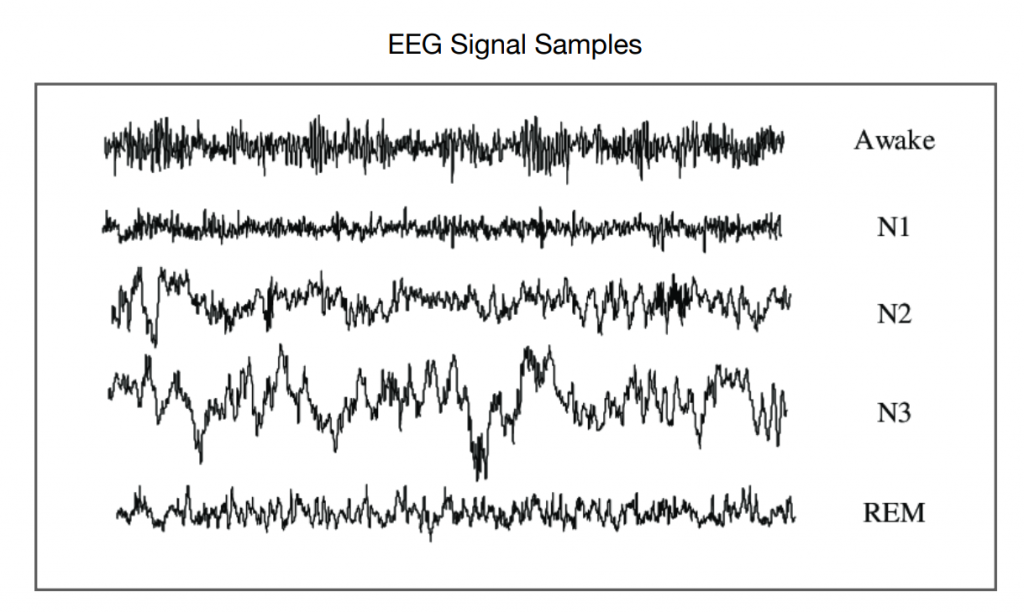
N1 Stage (Light Sleep):
This is the onset stage of the sleep cycle, where individuals are in a state between wakefulness and sleep. In this stage, eye movements begin to slow down, muscles relax, and heart rate and breathing gradually slow down. In the N1 stage, individuals may feel their consciousness fading but still have awareness of the external environment. They are easily disrupted by external stimuli such as slight noise or touch.
N2 Stage (Moderate Sleep):
This is the middle stage of sleep where eye movements stop, brain activity slows down, but there is still some level of activity. The body enters a true sleep state with relaxed muscles, stable heart rate, and breathing. In the N2 stage, the depth of consciousness decreases, making individuals less susceptible to external disruptions, although they can still be easily awakened by mild stimuli. Maintaining good sleep posture and a conducive sleep environment contributes to improving sleep quality.
N3 Stage (Deep Sleep):
This is the deepest stage of sleep where brain activity is minimal, muscles are completely relaxed, and heart rate and breathing reach their lowest points. The body undergoes repair and recovery during this stage, which is crucial for overall health. In the N3 stage, consciousness is significantly reduced, making it difficult to be disturbed by external stimuli, and individuals have minimal reactions to sound and stimuli. Maintaining a regular sleep schedule and routine helps facilitate entry into this stage.
These sleep stages cycle through the sleep cycle, transitioning from N1 to N2, then N3, and gradually back to N2 and N1 before entering Rapid Eye Movement (REM) sleep stage. The repetition of the complete sleep cycle helps the body undergo repair and recovery, maintaining a healthy sleep pattern and quality.
Rapid Eye Movement (REM) Sleep
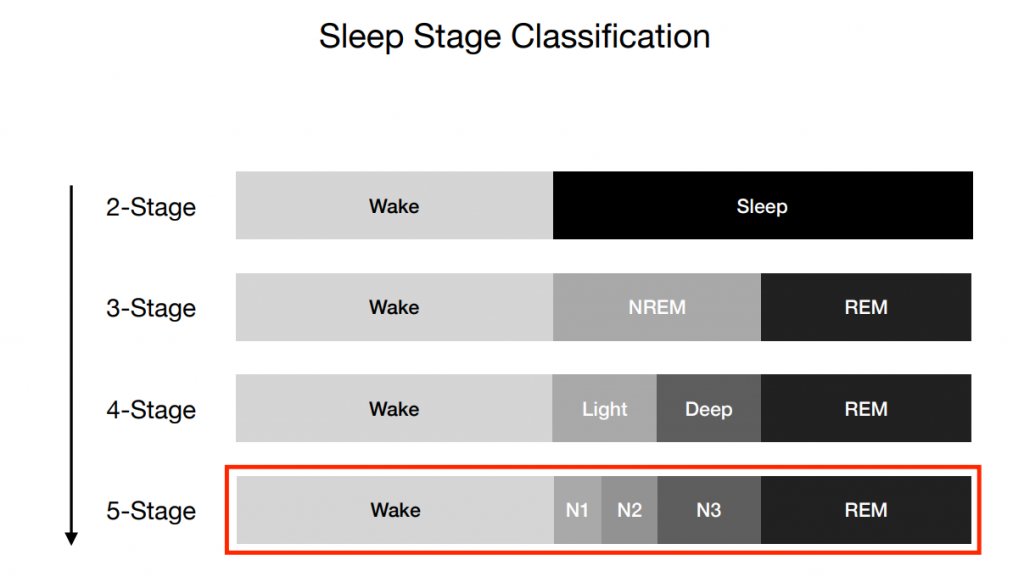
Rapid Eye Movement (REM) sleep is a distinct stage in the sleep cycle, also known as REM sleep. This stage is characterized by the following features:
Rapid eye movements: In REM sleep, eye movements are rapid, which is not observed in other stages of the sleep cycle. This rapid eye movement gives REM sleep its name.
Brain activity: Although the body is in a relaxed state, brain activity during REM sleep is similar to that of wakefulness, and sometimes even more active. This stage is also known as “dream sleep” as individuals often experience vivid dreams during REM sleep.
Complete muscle relaxation: Despite the active brain, muscles are completely relaxed during REM sleep to prevent excessive movement during dreaming.
Irregular heart rate and breathing: Heart rate and breathing patterns become irregular during REM sleep, contrasting with the stability observed in other sleep stages.
REM sleep typically occurs throughout the sleep cycle, with a lower proportion of REM sleep in the first sleep cycle after falling asleep. However, as sleep cycles repeat throughout the night, the proportion of REM sleep gradually increases. The longest duration of REM sleep usually occurs in the early morning hours.
REM sleep is crucial for the body and brain’s recovery and regulation. It is associated with functions such as learning, memory consolidation, emotional regulation, and creative thinking, making it an essential component of healthy sleep. REM sleep encompasses all sleep stages, including naps, and can account for 5% to 50% of total sleep time. Insufficient REM sleep can affect cognitive function and emotional stability.
Sleep Stages Monitoring with SLEEPON 3.0
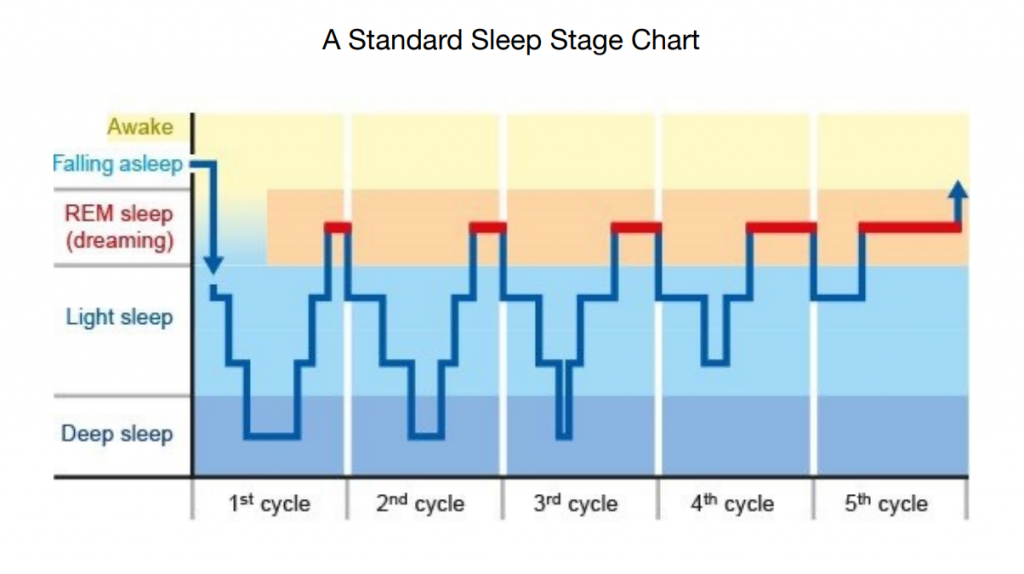
- Understanding Sleep Quality: By monitoring different sleep stages, SLEEPON 3.0 helps individuals understand the quality of their sleep. Deep sleep stages are crucial for physical restoration, while REM sleep is linked to cognitive functions and emotional regulation. Knowing the duration and patterns of these stages can indicate overall sleep effectiveness.
- Detecting Sleep Disorders: SLEEPON 3.0 aids in identifying potential sleep disorders by tracking abnormalities in sleep stages. For example, disruptions in REM sleep may indicate conditions like sleep apnea or restless legs syndrome, prompting individuals to seek professional evaluation and treatment.
- Personalized Sleep Improvement: With insights into sleep stages, SLEEPON 3.0 enables personalized sleep improvement strategies. Users can adjust their routines, environment, and habits based on data, enhancing the quality and duration of essential sleep stages for better overall rest.
- Health Monitoring: Sleep stages impact overall health, including immune function, mental acuity, and emotional well-being. SLEEPON 3.0’s sleep stage monitoring provides a holistic view of sleep health, empowering users to make informed lifestyle choices for better health outcomes.
- Research and Development: Data collected by SLEEPON 3.0 contributes to sleep science research, fostering advancements in understanding sleep physiology, optimizing sleep interventions, and developing innovative technologies for improved sleep management.
In summary, SLEEPON 3.0’s ability to monitor sleep stages is essential for comprehensive sleep assessment, early detection of sleep-related issues, tailored sleep enhancement strategies, holistic health monitoring, and contributions to ongoing sleep research and innovation.
SLEEPON 3.0 Upgrade: Your Voice Matters!
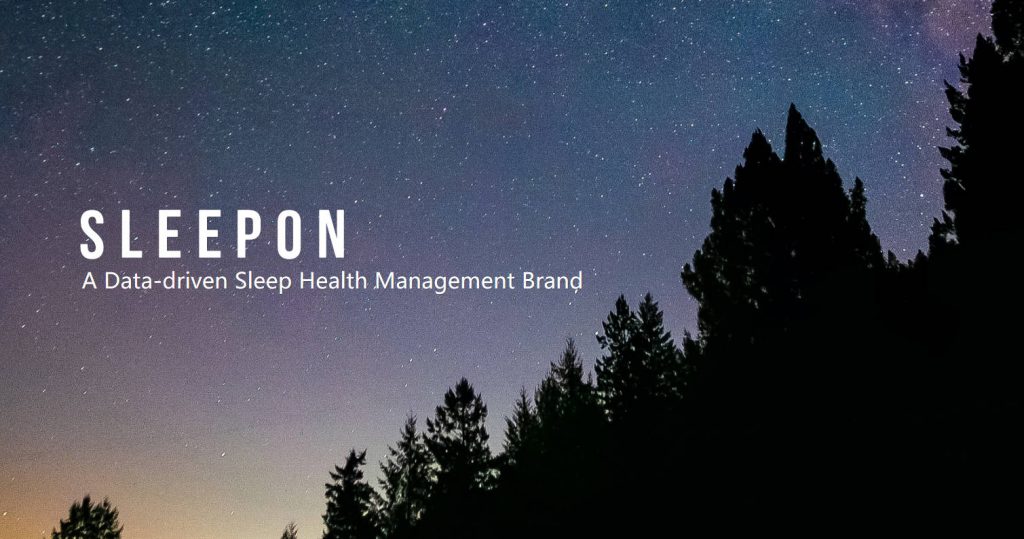
Dear Go2sleep community members, Go2sleep is about to undergo a major upgrade – Go2sleep 3.0!
At this important moment, we eagerly await your feedback and want to invite you to leave your suggestions, expectations, or any ideas about Go2sleep 3.0 in the comments section. You can discuss the features you are most looking forward to, your expectations for the upgrade, or your personal sleep experience.
By sharing your opinions, you will become a key member in shaping the future of Go2sleep and building the community together.Your feedback will help us better understand your needs and provide you with a more personalized sleep experience.We hope to hear your opinions on new features, improvements, and innovations to ensure that Go2sleep 3.0 meets your expectations.
For more news on the 3.0 APP upgrade,could please subscribe and follow us.
403A, Building A2, Zhihui Park, Fuyong Street, Bao'an District, Shenzhen, Guangdong, China
Products
Company
Copyright © SLEEPON. All rights reserved.
SLEEPON keeps both Sleeponhealth and Sleepon.us due to the brand upgrading. We promise to provide the same products and service in both sites.





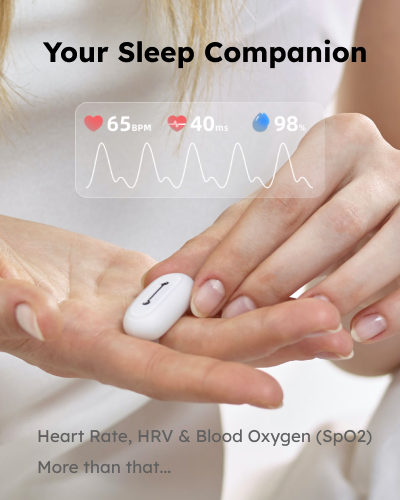





Leave a Reply